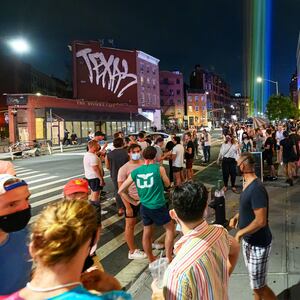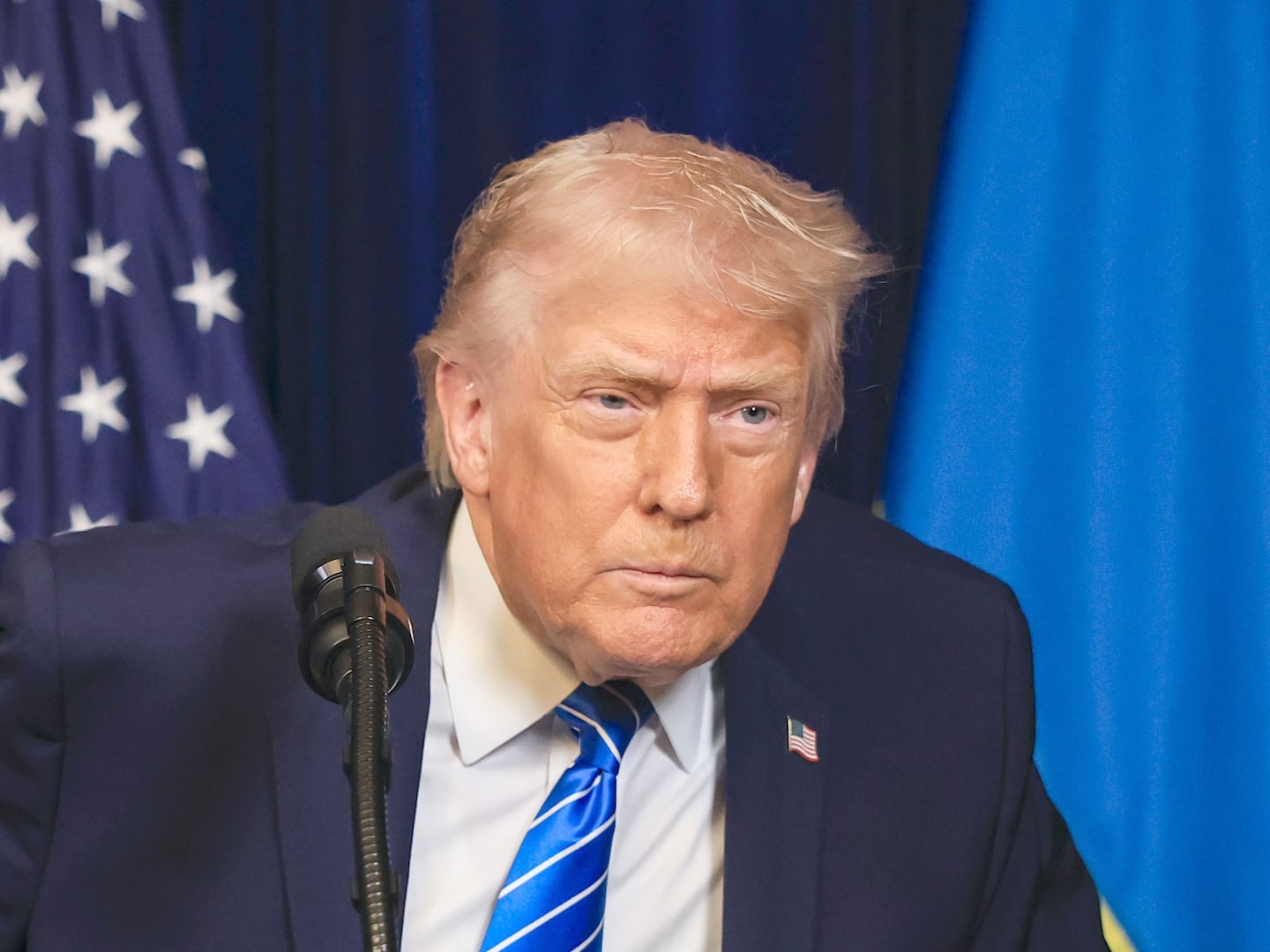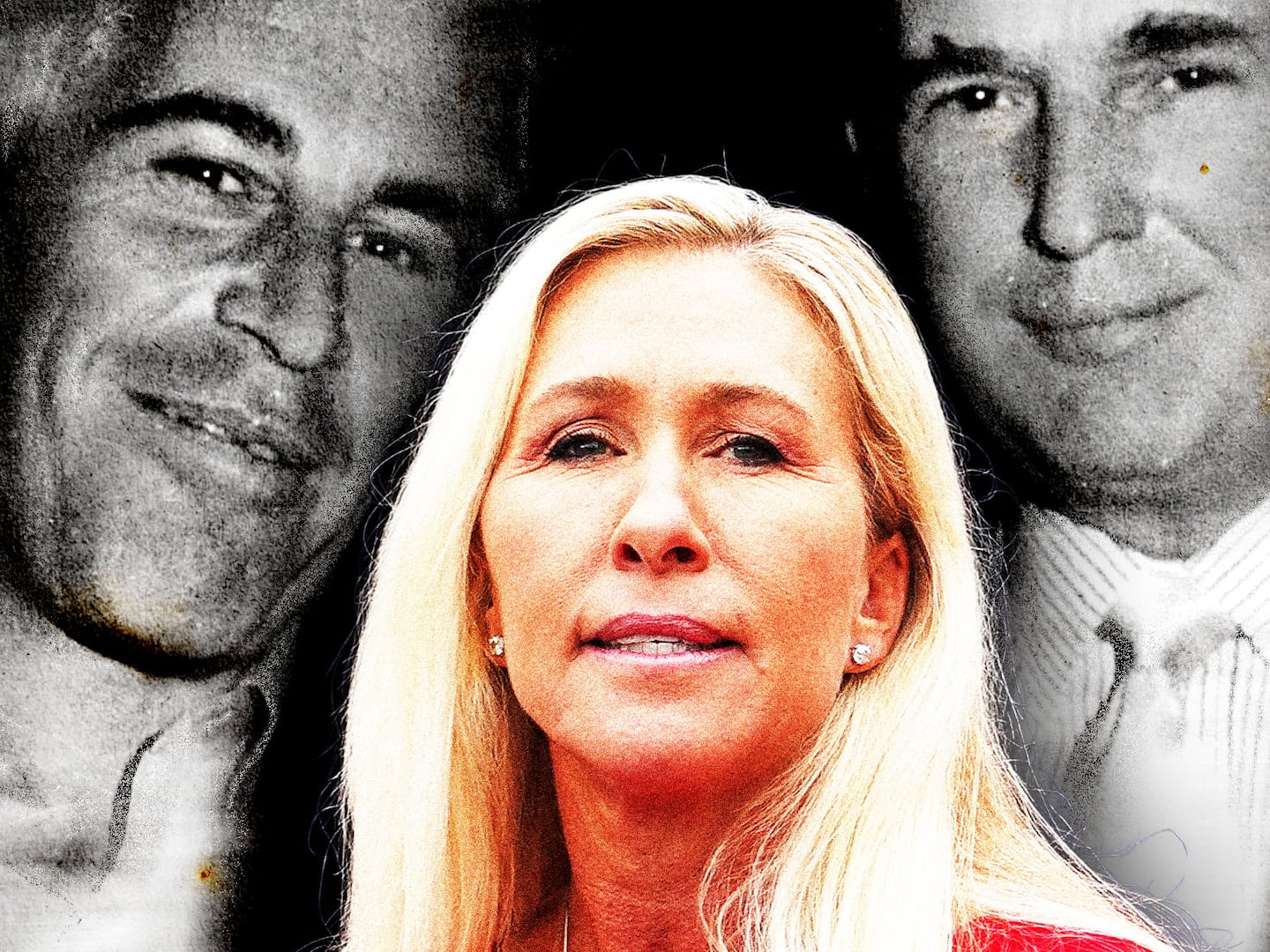There’s a scene in Years and Years, Russell T. Davies’ brilliant drama set in the near future (so brilliant it feels, every day in real life, that events overtake it), in which the character Rosie (Ruth Madeley) looks on in wonderment at Emma Thompson’s right-wing demagogue, Vivienne Rook. It is before Rook has fully risen to terrifying power. She is just a clever loudmouth, “saying the unsayable” as such trash merchants like to market themselves as they simultaneously stir the mob and build their brands.
Rosie watches Rook, a wide smile on her face. Rosie knows that Rook’s views are extreme, but people like her have such a way of saying them that makes it feel impossible to turn away. Davies’ point is how easy it can be to go from transfixed to voting booth—as Donald Trump proved. Extremity, the voicing of extremity, is the snacky basis of the seduction.
And so it is with this summer’s stupidest debate: the state of New York. I have read, with the same creeping smile as Rosie had looking at Vivienne Rook, the thoughts of James Altucher who left New York City, the apocalypse apparently nipping at his heels; and then Jerry Seinfeld’s rejoinder, telling Altucher that he was a “whimpering putz,” and that New York would be fine; New York would return to its New Yorkiness.
The debate has rumbled on, mainly on the side of rah-rahing New York City, with people sharing photographs of quiet streets and bucolic parks in contrast to the images of violence and anarchy being fallaciously invoked by those on the right. A Facebook group, Staying Put in NYC, has been set up for residents to come together and vouch for the city.
The reality of experiencing life in (or out of) New York, since March up to now, and beyond now, is more complex—and really comes down to money and how much you have of it, as so much in New York always has. A colleague denounces “the rich leavers,” as she describes them. “To my thinking whole neighborhoods have changed drastically to accommodate them and their sacks of cash—mom-and-pop businesses and poorer people pushed out—and then they just pick up and leave at the first sign of trouble.”
If you are without wealth, without an escape to wherever the well-heeled have escaped to, without the opportunity to live somewhere fancy and safe, this has not been an easy few months. It has been difficult. It is OK to say that.
It is also OK to say that it has been an astonishing moment to live and be here, and to be proud to live here. The streets have been empty, and also filled with protesters. And yes, walking in this city, through its streets, parks and public spaces, can still be a vital daily joy.
It is the extremity of the debate about New York—Staying here! Leaving here! The city’s falling apart! No, the city’s fine, it’s amazing!—that is completely absurd, and yet so utterly New York because the debate and voices and claims of anything to do with New York always have to be as outsized as the city’s spirit.
Less snackily, what the pandemic actually forces us to do is look at this city anew, which—unsurprisingly—feels like an exhausting concept for an urban population already utterly exhausted. It’s far easier to bellow at each other and chest-beat our bragging rights than to look around and say, “What the hell do we do now?”
Currently, New York isn’t working as New York should; its future feels hazy, changeable, unfixed, and as restless as the city itself feels in demi-lockdown—caught between frantic bustle and nervy stillness. The heroes of the city—those who run its diners and restaurants and stores—are keeping us fed. Its street life is its own addictive cable channel.
The hope is the city comes back to life, but can that predate a vaccine? What is New York really like right now? Sorry, this is the worst, least-grabby headline: It’s hard to tell. It can vary on each trip out of our homes. It’s the luck of the draw, a boat slightly lost at sea that can still just about see the shore. The city doesn’t fully know itself. Like the best cities, and the residents who hold them fiercely close to their hearts, it is just trying to carry on—one day and week to another.
How is New York City? Brutally, and this is rarely mentioned: it depends who you are, your race and ethnicity, where you are, how rich or poor or you are, and whether you have a job or not. The debate, as it is framed, comes with the unstated luxury of financial choice attached to it, ignoring the poor and working poor people living in the city and its outer reaches. These choices of where to live and how to live typically come with a healthy bank account.
Everything that separates people in a city—wealth and most obviously during this pandemic, simple geography—has been exacerbated by the pandemic. “Where are you going?”—the most common question in a busy metropolis like New York—relies on its citizens busying around its blood vessels, and has become an absurd question. Many people’s New York geography has shrunk.
Yes, we can eat outside with friends. From today, we can go to the gym. Indoor dining may follow. But all these signals of normality come with restrictions on numbers, and restrictions on how we behave when we participate in them. We can see our friends, but without the full practice of normality, half-normality feels onerous. We may as well stay home, which is precisely what a city like New York, in its pre-pandemic guise, goaded us against.
Here are some plainer truths about New York, and how it is weathering this grim moment in a history, from someone who actually lives here, loves living here, but has seen the city change in so many ways since the middle of March—and who also thinks the crystal ball-gazing claims (It will never be the same! It will bounce back easily!) are as stupid as the extreme forecasts that ground them.
We cannot generalize about the emotions of a city of millions of people. But maybe we can say that this city is in shock, the degree of shock varying from resident to resident. A lot of people died in New York City (23,703 at the most recent count). A lot of people were sick (the city has counted 239,000 COVID cases, again at the most recent count). Some of us felt that keenly, others did not.
The city at first became extremely quiet, quite literally deathly quiet apart from the shriek of sirens. Yes, they were scary, but they were not—if you live on a street where ambulances regularly shriek—that alarming. There were more of them. What was striking then was the lack of shops and services that were open; the lack of cars and people.
The streets were empty by day, and cavernously so at night (I should know, my idea of luxury is night-time walking in a city). Masks are sold everywhere now. For a while, at the beginning, they were a prize to seek out. Mostly, at the time of writing at least, people wear them. Some do not. Those in masks wonder whether those not wearing them have an ounce of civic responsibility about them. Those not wearing masks don’t seem to care, but also know not to make eye contact with their opposite numbers.
The first mystery was: Where did the people go? Were they at home, or simply gone? In a story as old as time, the rich and well-off, or those with families and second homes elsewhere, were fine. They left the city. Walking at night, you would see (can still see) very lovely buildings in neighborhoods like Gramercy Park shrouded in darkness. (I imagined many Miss Havishams running joyously free in isolation from room to room in many.)
Has Jerry Seinfeld lived full-time in New York City during this pandemic? For all the bravura rose-tinted spectacles of his old New York he invokes, it doesn’t sound like it.
As the months have gone on, people have returned. Did the not-that-rich run out of money? Did they get bored? Did necessity and reality start biting? Well, they are back. Cars are very much back. But however pretty outside dining looks, it’s a cover for a city that feels not apocalyptic, but definitely uncertain.
I have noticed a marked increase in people begging for money in the neighborhoods I walk in, and sleeping on the streets. With fewer non-homeless people on the streets, that begging and visibility of poverty stands out more. Those in need are now in even greater need, and that need is on raw display.
Talk to restaurant owners, and they will tell you that, sure, the twinkling fairy lights and awnings look pretty, but they cannot continue like this, some running at 50 per cent capacity and below. Great engines of commercial energy, like Broadway, are shut down. Many theater professionals think only the presence of a vaccine will guarantee those spaces full once again.
Times Square may look crowded, but the streets of theaters around it are ghostly quiet. People are still working at home. Offices are closed. The city isn’t falling apart, but it is in a stasis. The recurring question is, “How long can this go on?” Some kind of massive financial bailout of businesses seems necessary.
It isn’t strange that anyone, with children or not, may want to leave New York City. It is not a betrayal to do so. The city is expensive. If you have lost your job, what should you do? Prove your New Yorkiness by falling further into poverty?
If you have money and you decide to leave, that’s no betrayal either. Maybe you have just had enough. Maybe you will come back. Maybe it’s a temporary goodbye. That’s fine, too.
A lot of us who have stayed and plan to stay may be doing so for a mix of reasons: financial necessity, a belief that this wonderful city will just click into itself again (it will, we feel that), and so we will stay here living in our city until it does, willing it back to heart-beating health like Elliott did with E.T.
That is our choice, and it as valid a choice as leaving New York is. Cities exert powerful loyalties on the people that live in them, and that loyalty is returned—even long after we leave those cities. New York and New Yorkers aren’t alone in thinking, fiercely, they are the greatest. London feels the same way about itself. Many other places do, too.
But this tribalism played out in opinion columns only pays the bills of those writing the columns. Their chest-beating doesn’t make theaters open faster, or save your local diner from closure. Jerry Seinfeld’s stirring words cannot make you feel safe if you feel that your beloved city feels out of whack. The pandemic and its consequences are to blame for people leaving New York—not the people leaving New York, and not New York in and of itself.
Of course, New York is special. Of course, we want it back, roaring back. But those people trashing those expressing doubts about it, and insulting those who are leaving it for whatever reason, are misstating a demand for urban loyalty. Many of those who have left are doing so not out of cultural protest, but because of material circumstance and a desire for change. It’s easy to hate on the family who reveal their move to the suburbs, rather than questioning the insane economic forces that have made that move out of the city necessary in that family’s eyes.
One strange thing about the pandemic is that it has made everybody, in so many different ways—again depending on income and circumstance—hit “pause” on how they are living their lives, not just in New York City, and rethink what the life they have been living has been. That also is valid.
If a segment of New York’s population has decided to vacate the city, then the city might ask itself why—and going forward how it can make itself more livable in for all. Cities work best with mixed populations. New York City should ask itself how hyper-capitalism has brought the city so violently out of kilter to make such emigrations necessary.
Instead, the pandemic seems to have made everyone switch to a predictable round of “Are you a real New Yorker?” instead of focusing on the gnarlier question of what is necessary to ensure the city’s re-emergence. It’s sexier to judge someone’s life choices than it is to plot a city’s complicated financial and cultural recovery.
Residents themselves may ask themselves what living in a city amounts to, and if New York means as much to them as all their heartfelt words suggest, then their living in this city should amount to more than a casual transactionality. Are they really living within their communities, or just treating them as convenient dormitories?
And anyway, what makes a “real New Yorker”? Someone who has been here 10, 15, 20 years? Someone who lived here in their chosen formative or romanticized era—the 1960s, ’70s, ‘80s, or ’90s—but who left the city in March, with an out-of-town bolthole to come and go from as they please? Or a new immigrant who has lived this traumatic period in the city in full the last six months? The “real New Yorker” definition may need to be revised. Sorry, Jerry Seinfeld.
Our wonderful city is still here, as are many of us who stayed. We will continue to cheer on NYC’s post-pandemic leg-kicking rebirth. We can proudly state this, while also looking at the fraying political and cultural threads the pandemic has revealed—and hoping that the city’s leaders devote their time to re-stitching those threads to make a better, healthier city.
Of course, it’s more likely we’ll just continue shouting at each other over how people should and shouldn’t live here. This, after all, is New York.







